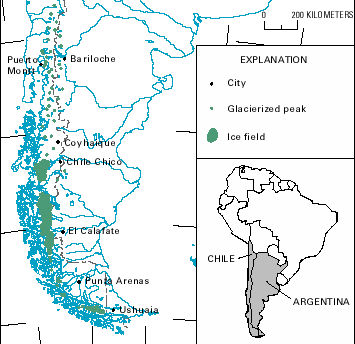In a blog post last month, I wrote about the growing interest in ocean-based carbon dioxide removal (CDR), and the complex legal issues it raises. Much of the legal complexity surrounding ocean CDR stems from the fact that the ocean is a shared resource in which all countries, both coastal and landlocked, have an interest. Given this, over the last century, a large body of international law has been developed to govern ocean-based activities. But none of the relevant international agreements were designed with ocean CDR in mind. In fact, when the agreements were first adopted, the possibility of ocean CDR was not even being discussed. However, now that ocean CDR is being actively considered, the international community is looking to adapt these longstanding agreements to fit new activities. It is proving difficult in part because of the highly siloed nature of international environmental law.
Let’s start with the 1972 Convention on the Prevention of Marine Pollution by Dumping of Wastes and Other Matter (London Convention) and the 1996 Protocol to the Convention (London Protocol). Those instruments aim to prevent pollution of the marine environment from ocean dumping. At the time they were adopted, the primary focus was on preventing the discharge of waste materials into the ocean. The preamble to the London Convention notes that “the capacity of the sea to assimilate wastes and render them harmless… is not unlimited” and emphasizes the need for countries to “use the best practicable means to… reduce the amount of harmful wastes” entering the ocean. The text of the Convention is somewhat broader, however. It requires countries to control all forms of ocean dumping, with that term defined to mean any “deliberate disposal of waste or other matter into the sea” (emphasis added). The reference to “other matter” has opened the door for application of the London Convention and Protocol to ocean CDR activities that involve the discharge of materials into the ocean. (For more on that, see my previous blog post here.)
Earlier this month, the parties to the London Convention and Protocol met in London to discuss, among other things, whether and how to apply those instruments to certain ocean CDR and solar radiation management activities. On the ocean CDR side, the parties looked at (1) ocean alkalinity enhancement and (2) biomass cultivation for carbon removal (including seaweed cultivation and sinking). The parties also examined two solar radiation management techniques: (1) marine cloud brightening and (2) surface albedo enhancement.
Following the meeting, the parties issued a “Statement on Marine Geoengineering,” in which they concluded that “there is considerable uncertainty regarding [all four techniques’] effects on the marine environment, human health and on other uses of the ocean.” However, in the parties view, “each of the four . . . techniques . . . has the potential for deleterious effects that are widespread, long-lasting or severe.” Given this, the parties determined that use of the techniques, other than in connection with “legitimate scientific research, should be deferred.”
This is similar to the approach that the parties to the London Convention and Protocol have previously taken to ocean fertilization. Back in 2008, the parties adopted a resolution which stated that, “given the present state of knowledge, ocean fertilization activities other than legitimate scientific research should not be allowed.” In 2010, the parties adopted an assessment framework for determining whether a particular ocean fertilization project involves “legitimate scientific research,” and thus may be allowed. The parties are now proposing to apply that same assessment framework to a broader range of ocean CDR and solar radiation management activities. The Statement adopted this month declares:
“The governing bodies are of the view that the requirements set out in the [2010] Assessment Framework for Scientific Research Involving Ocean Fertilization . . . form the appropriate basis for the assessment of proposed research and development projects relating to marine geoengineering, and strongly encourage the[] application thereof.”
This is likely to be controversial because the 2010 assessment framework states that, in order for an activity to qualify as “legitimate scientific research,” it must not result in any “financial and/or economic gain.” There is some uncertainty as to what, exactly, this means. For example, what if a project intended to shed light on the environmental effects of ocean alkalinity enhancement is funded partly through the sale of carbon credits, but the amount generated from the sale is less than the cost of the project. It could be argued that there is no financial “gain” from the project so it qualifies as permissible scientific research. But, on the other hand, the project is being used to generate revenue and so might be viewed as a non-research activity that “should be deferred.” The uncertainty has led some to argue that application of the 2010 assessment framework could discourage private-sector investment in ocean CDR research.
The parties to the London Convention and Protocol have argued that restrictions on ocean CDR are justified given “the precautionary approach outlined in article 3” of the London Protocol. That article states:
“In implementing this Protocol, Contracting Parties shall apply a precautionary approach to environmental protection from dumping of wastes or other matter whereby appropriate preventing measures are taken where there is reason to believe that wastes or other matter introduced into the marine environment are likely to cause harm even where there is no conclusive evidence to prove a causal relation between inputs and their effects.”
This is consistent with the precautionary principle that underlies much international environmental law. As articulated in the Rio Declaration on Environment and Development, the precautionary principle states that, “[w]here there are threats of serious or irreversible damage, lack of full scientific certainty shall not be used as a reason for postponing cost-effective measures to prevent environmental degradation.” In applying this idea to ocean CDR activities, the parties to the London Convention and Protocol are effectively saying that those activities pose a risk of harm and thus should be restricted, notwithstanding the “considerable uncertainty” about whether the risks will eventuate or how they will manifest. There is, however, an alternative reading of the precautionary principle that could justify pursuing ocean CDR despite the risks it presents.
Consider, for example, Article 3 of the United Nations Framework Convention on Climate Change (UNFCCC) which directs countries to adopt “precautionary measures to anticipate, prevent or minimize” climate change. The article goes on to state that, “[w]here there are threats of serious or irreversible damage, lack of full scientific certainty should not be used as a reason for postponing such measures.” Climate change is already causing serious and irreversible damage, which ocean CDR could help to prevent or minimize. Thus, applying the precautionary approach set out in Article 3 of the UNFCCC, the scientific uncertainty regarding ocean CDR does not justify failing to pursue it.
These differing applications of the precautionary principle reflect a broader tension in the governance of ocean CDR. On the one hand, guardrails are needed to protect marine ecosystems from unknown, but potentially significant harms resulting from ocean CDR. On the other hand, however, it is important not prevent action to advance what could be a highly effective means of combatting climate change.
Developing an international governance framework that achieves both of these objectives will require much greater coordination between those working on ocean protection and those focused on climate change. To date, the two groups have been working in silos, each focused on a different aspect of the problem. Discussions under the London Convention and Protocol have centered on restricting ocean CDR to minimize harms to ocean ecosystems. Meanwhile, in discussions under the UNFCC and Paris agreement, ocean CDR is being touted for its climate benefits. Those conversations must come together so we can find a middle ground.
The parties to the London Convention and Protocol have recognized this. In the Statement on Marine Geoengineering issued this month, the parties to the London Convention and Protocol “invite active cooperation” between all of the international bodies working on ocean CDR and related activities (e.g., solar radiation management). Hopefully other bodies take them up on the invitation.

Romany Webb
Romany Webb is a Research Scholar at Columbia Law School, Adjunct Assistant Professor of Climate at Columbia Climate School, and Deputy Director of the Sabin Center for Climate Change Law.




